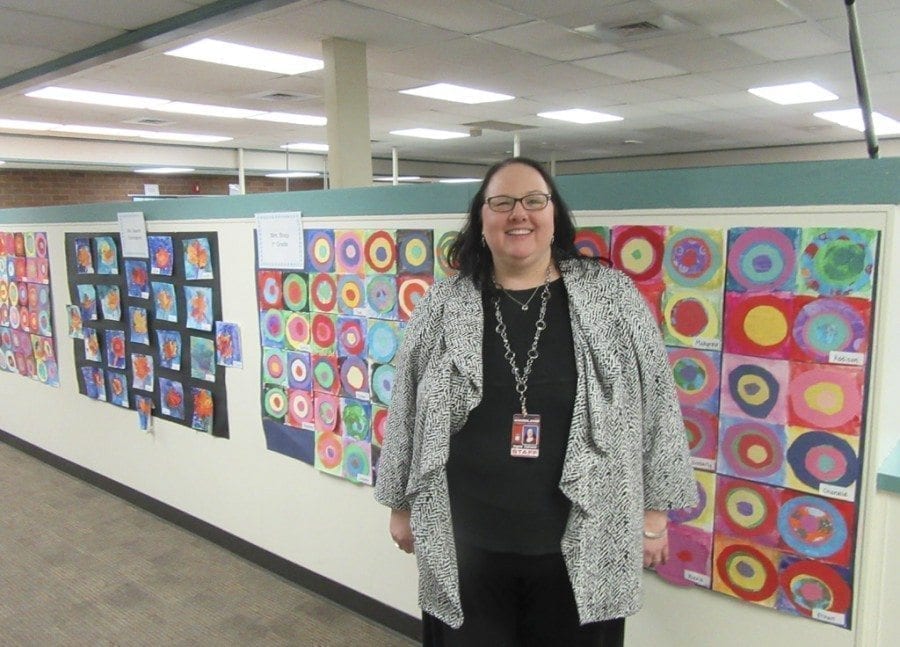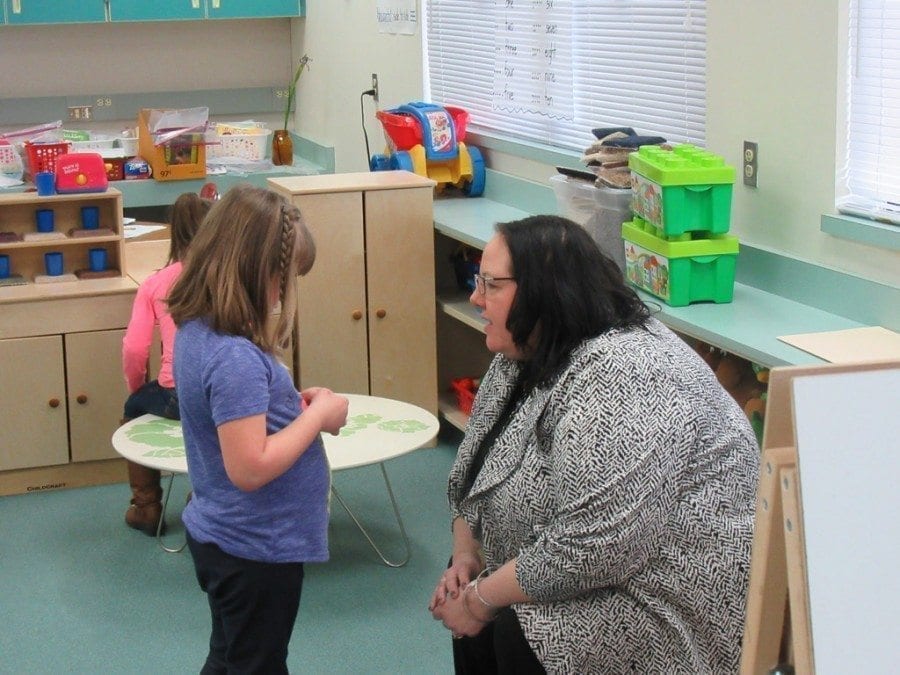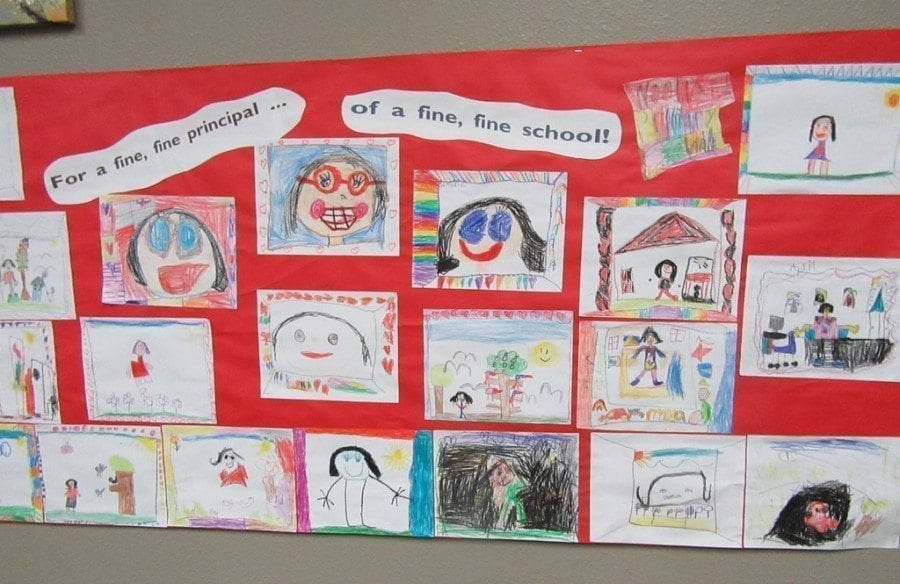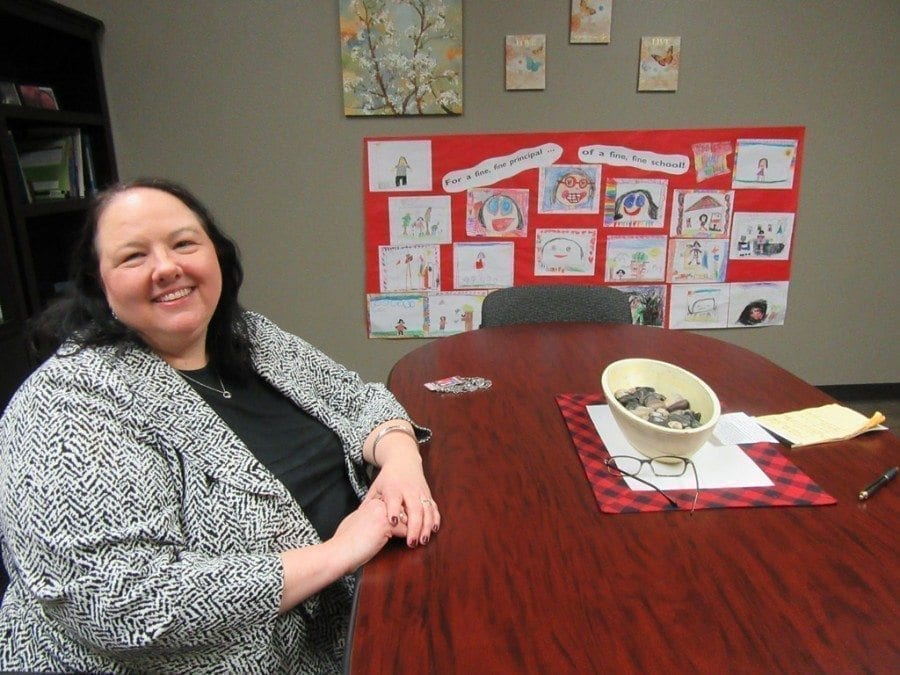Carolyn Schultz-Rathbun
For ClarkCountyToday.com
WOODLAND — “At work,” says Woodland Primary School Principal Ingrid Colvard, “I do everything fast. I hit the door running. We don’t have slow moments.”
But that’s not quite true. When Colvard is with children, she has all the time in the world.
The children are clearly used to their principal dropping in. On this particular day, some scattered at learning centers around their Kindergarten classroom, continue what they’re doing. Others come over to talk, showing her something they wrote or proudly displaying a loose tooth.

Colvard is in her first year at Woodland Primary, a K-1 school with an early intervention preschool on a quiet street near downtown Woodland. The school, home to about 355 students, has experienced a lot of turnover in the past few years among both staff and students.
Roughly a quarter of the students are Hispanic, with many English language learners. Almost half qualify for free and reduced lunch.
“And we’re lagging in reading and language arts,” says Colvard. “We’re not having kids enter with the skills we might have hoped.”
The solution?
“It’s important to know each child as a whole person,” Colvard says. “That’s even more important than curriculum standards. They don’t just come up to me to show me that their tooth is coming out. They know I think their learning is extremely important. Not only is visiting the rooms the most fun. It informs me deeply what’s necessary to move the school forward. You can do all the programmatic things. But relationships are the most important.”

Colvard, who holds an advanced degree in social work, set out to work as a clinical psychologist but ended up as a counselor in the Hockinson School District for many years.
“And I fell in love with that work,” says Colvard. “Schools are an amazing place to practice that craft.”
Then, last July, after a stint as assistant principal at Hockinson Elementary, she moved to Woodland Primary. In January, she took on the principalship of Yale Elementary as well, a small K-5 school with 38 students and three certificated teachers.
“This was jumping into a not safe space,” Colvard says. “I was known and I think respected in Hockinson. I was afraid I wouldn’t have the same impact (here). But I felt very called to do this work. This isn’t a job, it’s a mission. It’s my little contribution to the generation coming up.”
Colvard says she’s still working on finding balance in her off-hours.
“There’s not a ton of balance,” she says. “This is all-consuming. I knew it was going to be a lot, especially at first. But the balance is family time. (My husband) Duane is a rock. Truly I’m grounded when I’m with him, and with our kids. During the snow days, I got to be with him a lot. I was working from home, but I’d have a cup of tea and be with him. That’s the balance.”

Woodland may have a small-town feel, but Woodland Primary has a set of very 21st-century problems. Many of her young Hispanic students, Colvard says, have already seen way too much.
“There are kids here with really hard stories,” she says. “The things they left, some of them are really appalling. They’re little and they’re scared.”
Colvard says she has had to work to find new ways of connecting.
“They may not be documented,” she says. “They may have language barriers. Some moms are afraid their kids will be taken away. Or that they’ll be taken away, and their kids will come home to empty homes. The fear after the election was very real.”
Colvard focused on a group of mothers taking English lessons from the school’s Hispanic Outreach Coordinator.
“Her families were panicked and struggling,” Colvard says.
So she invited them to coffee.
“And they were very afraid,” she says. “Afraid they would be picked up. But I wanted to give real answers about the role of the school. We had treats and coffee and about 40 people. And they come to me now. They come into the school. So I have to walk that line. I have to be a principal for everybody.”

And then there’s the behavior of students dealing with trauma.
“Schools like Woodland had no structure for how to handle that,” Colvard says. “How to keep learning going on when that’s happening. Our old models don’t work. Suspending a kid, sending them home, and the parent making them do yard work?” She shakes her head. “They’re having a physical and biological reaction (to trauma) that they don’t have the ability to deal with.”
In order for learning to occur, educators, says Colvard, must increasingly focus on social and emotional learning as well as the traditional academic subjects.
“We have to develop trauma sensitive classrooms,” she says. “You can’t teach if a chair is being thrown across the room.”
So Colvard is a woman on a mission.
“I’m here to make sure the kids are safe,” she says. “There’s nothing incredibly unusual or different or splashy, but by showing up each day and giving it our heart, the world gets better.” She pauses. “And in these walls it’s safe.”




